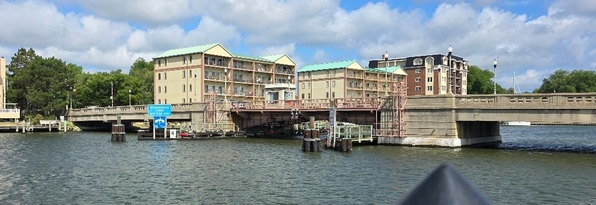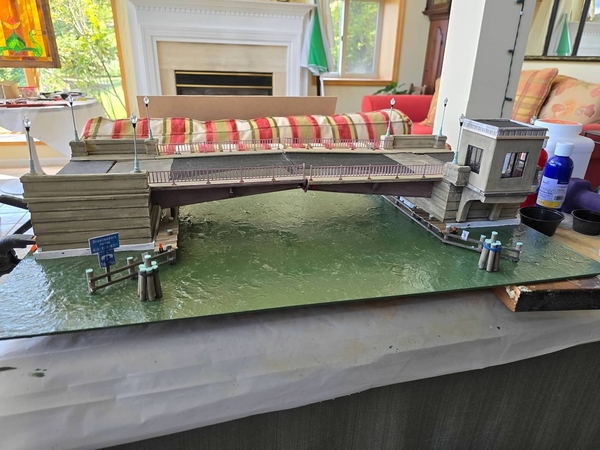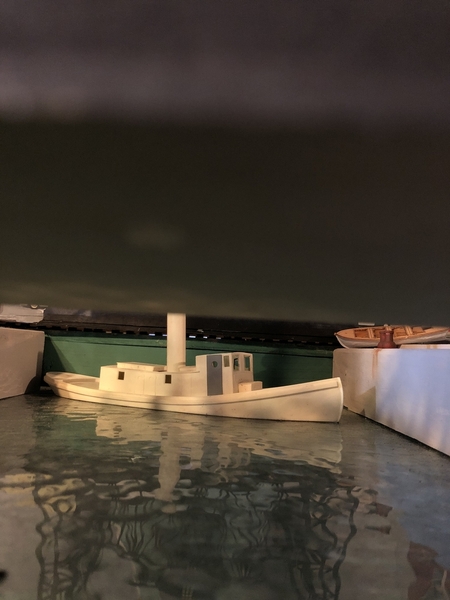I'm doing a scratch build of the bascule bridge over Cambridge Creek for the RFC train garden, and I've reached the point of fabricating the base plate that will locate and support the spans and eventually be covered with resin or other water simulation. The body of water being simulated is a brackish-to-salty tidal estuary off the Choptank River (itself an estuary of the Chesapeake Bay). To my eye, the water appears a rather cloudy greenish-brown, with lots of organic particulates:
My immediate question is, what is the best color for me to use for the base coat over the one-eighth inch thick hardboard base I'm fitting under the span sections? And for that matter, what type of water simulation media would you recommend for a project like this (possibly several square yards in total), and what colorants would work best to simulate the cloudy colors of the prototype creek?
My plan is to drop the plate in place, then pour the resin over and around the base and fill the rest of the creek representation to a depth of a quarter inch or so max -- likely requiring several gallons of media. So, something economical would be preferred, as well as something that can be done in sections, or at least able to tolerate long pour times start to finish.
Thanks in advance for any suggestions or advice you may be able to offer, and any pics would be helpful!
















